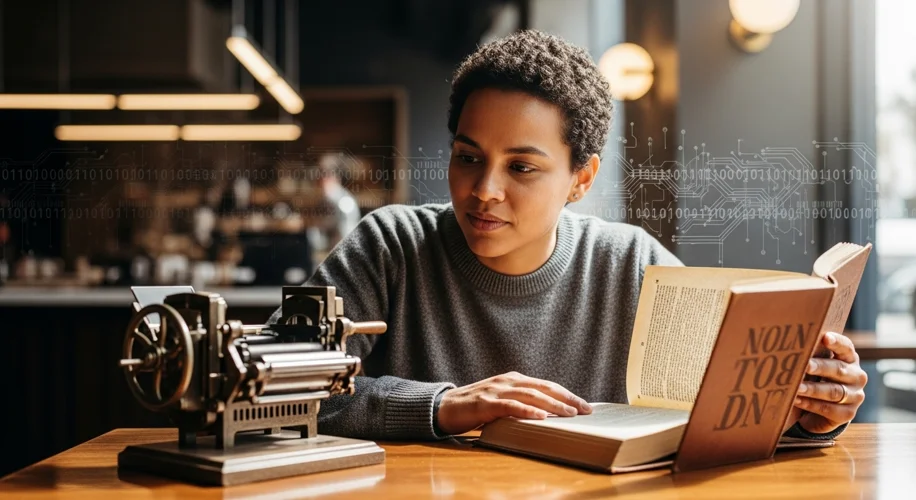Ever found yourself trying to explain something totally new by saying, “It’s kind of like X, but for Y?” We all do it. It’s how our brains try to make sense of the world: by finding patterns in what we already know. And honestly, it’s one of the best tools we have.
Think about the printing press. Back in the mid-1400s, when Johannes Gutenberg started messing around with movable type, it was a pretty wild concept. Before that, books were copied by hand – a slow, expensive, and error-prone process. Most people never even saw one, let alone owned one.
Suddenly, Information Could Spread
When the printing press started churning out Bibles and pamphlets, it wasn’t just a faster way to make books. It blew open the doors to information. All of a sudden, ideas could travel further, faster, and cheaper than ever before. People could read, learn, and form their own opinions in ways that were impossible before.
Now, imagine being alive then. It must have felt like the world was turning upside down. There were huge changes: jobs for scribes disappeared, but new ones popped up in printing, publishing, and bookselling. Information became more democratized, leading to things like the Reformation and the scientific revolution. People worried about misinformation spreading, about the loss of traditional authority, even about the decline of memory because people wouldn’t need to memorize things anymore.
Sound Familiar?
Fast forward to today. We’re living through similar seismic shifts, aren’t we? Think about the internet, or even more recently, AI. When the internet first took off, people made analogies to the telegraph, to radio, to TV. Now, with AI, we hear comparisons to the industrial revolution, or again, the early internet.
And it makes sense! Just like the printing press, AI promises to change how we work, how we learn, and how we interact with information. We’re already seeing jobs shift, new industries emerge, and big questions about truth, ethics, and control. The fears about deepfakes and misinformation spreading through AI are echoes of the fears about printed pamphlets stirring up dissent.
Where the Analogy Helps (and Where it Doesn’t)
Using these historical analogies is incredibly useful. They give us a starting point. They help us anticipate potential challenges (like job displacement or information overload) and opportunities (like increased access to knowledge). We can look at how societies adapted in the past and draw lessons for today.
But here’s the thing: history doesn’t repeat itself exactly. It rhymes, as Mark Twain supposedly said. The printing press didn’t have to contend with global, instantaneous communication networks or algorithms that learn and adapt on their own. The scale and speed of change with AI are arguably far greater than anything we’ve seen before.
So, while we can learn a lot from Gutenberg’s era about managing societal change and the democratizing (and sometimes disruptive) power of information, we also need to be careful not to expect an exact blueprint. AI isn’t just a faster printing press; it’s something fundamentally different in its capabilities and implications.
What’s the Takeaway?
Our tendency to look back to understand forward is deeply human, and it’s a powerful tool for navigating uncertainty. It helps us feel a little less lost when everything feels new.
Just remember to hold those analogies lightly. Use them as a lens, not a fixed map. Understand the patterns, but also look for the unique elements of our current moment. That’s how we truly learn from the past, without being trapped by it, and build a future that’s uniquely ours.

